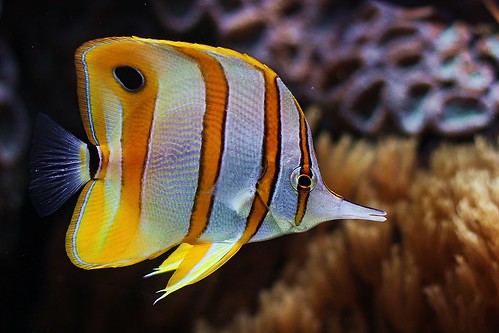The underwater world is full of fascinating creatures, colours and textures that when captured on camera can produce some of the most striking images you are likely to see. Whether you are into scuba diving, snorkelling, swimming or surfing, there is no reason why you can’t share your experiences with admiring friends. Digital cameras make it a whole lot easier to get great images under the waves, so here’s a few tips to help even novice photographers snap some striking photos.

The right gear
The best news is you don’t have to buy a new camera, or even break to the bank, to get into underwater photography. Waterproof plastic housings are available for a wide range of point-and-shoot cameras that most importantly keep the water out but still allow you to use most of the camera’s functionality, flash included. When choosing housings, make sure it is completely compatible with your camera, is watertight and still allows you to comfortably use it. The price will depend on your camera type and model, but as a guide, housings for Canon cameras can range from $65 to $375. If you really want to get serious there are specialised underwater cameras and you can expect to pay anywhere from a few hundred dollars into the thousands. Whether it’s a housing or camera you buy, make sure you check how much water pressure they can handle, which is usually referred to in terms of depth.
Understanding a unique environment
There are a few issues that underwater photography throws up that you would never experience on land. Firstly, there can be a lot of “floaties” such as small particles of coral, weed or sand that can appear as specks in an image. They can be hard to combat but if time is no issue, return when conditions are more favourable. Movement is an issue and it can be hard to stay still enough to ensure your photos remain in focus. Using flippers can be a big help while wearing a weight belt will also help to reduce unwanted movement, depending on the type of underwater shots you are after. Lighting can also be fickle so you may need to compensate with your shutter speeds and other settings. That unusual and changing lighting can also provide dramatic effects in picture too, so treat it as an ally also. Colour can suffer underwater as well so taking a picture of something such as coral is going to come out much better the closer you get to it.
Know your camera
Whether it is your usual camera encased in a waterproof housing or a new camera designed specifically for under the waves, take the time to learn how to use it before hitting the water. It’s going to feel different so understand what settings are likely to work best and how to make changes safely without comprising the camera’s watertight integrity. Don’t expect to get instantaneously amazing shots. It’s going to take some practice as light is moving through a completely different environment – water rather than air – and is going to throw up some scenarios you haven’t encountered on land before. If you are going on holiday to the Great Barrier Reef, for example, and plan on using your underwater photography skills there, test yourself and your camera in a pool first.

Photo: MPBecker
Safety is a priority
No picture is worth putting yourself at risk, so remember to stay safe. Always respect your surroundings and keep tabs on such things as tides and waves. Recognise your ability as well – if you are not a strong swimmer, stay close to shore, the boat or even better, a buddy.
Monday, September 26, 2011
Beginner’s Guide to Underwater Photography
Labels: digital camera, Underwater photography
Posted by ThanateTan at 7:56 AM
Subscribe to:
Post Comments (Atom)


0 comments:
Post a Comment